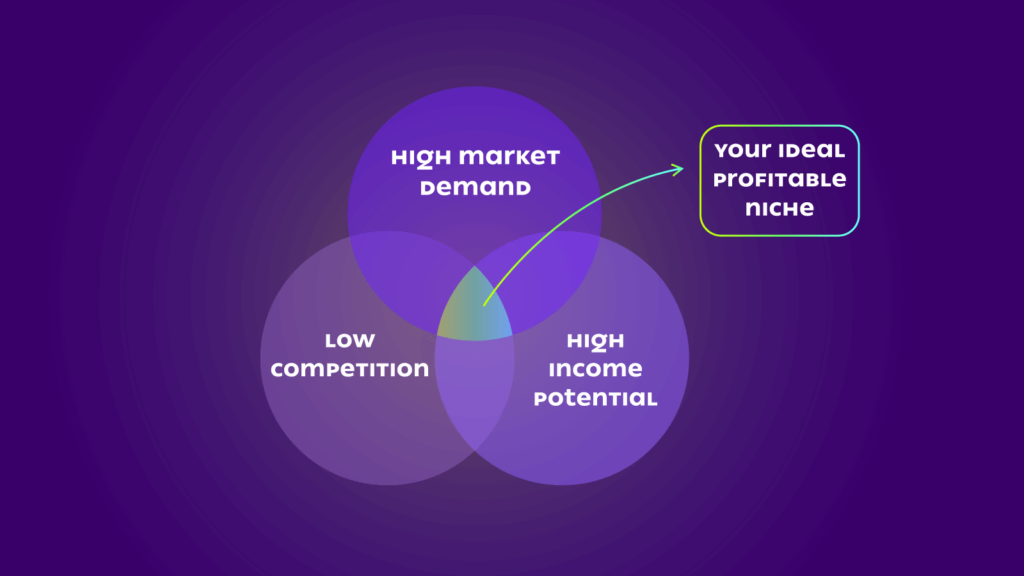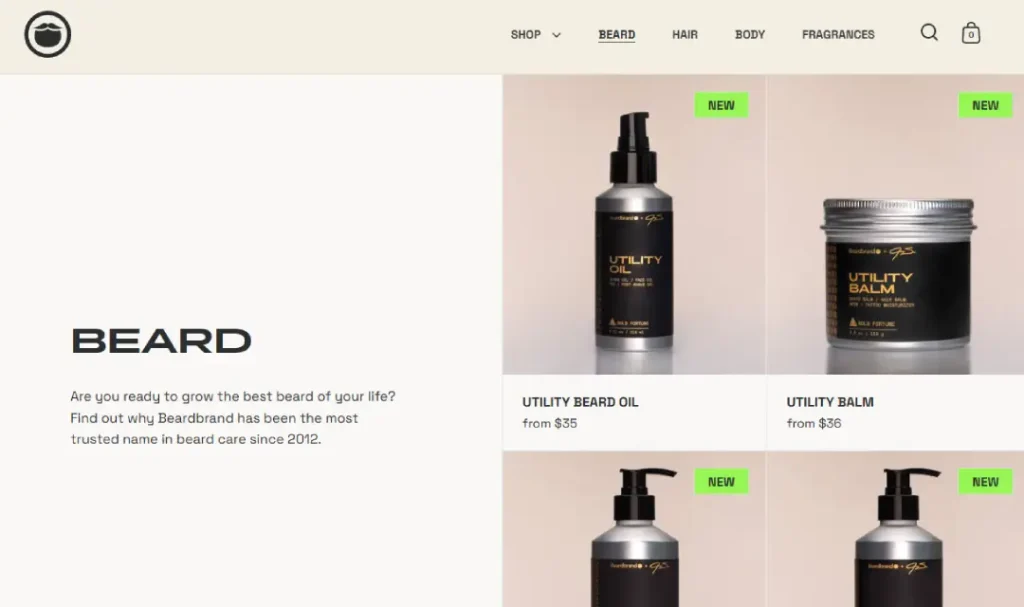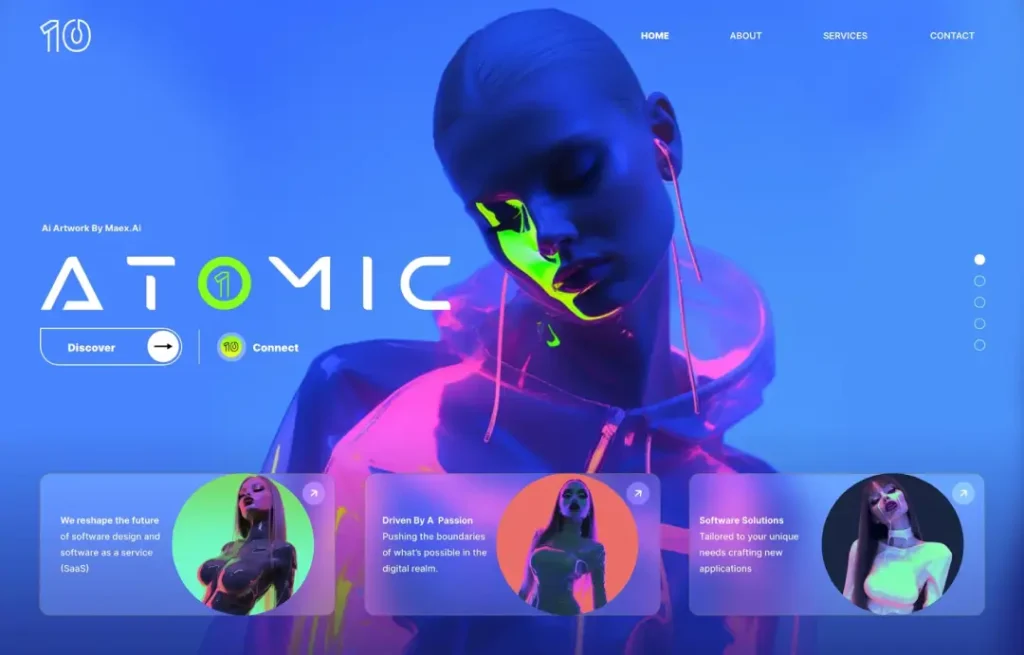Tips for Niche Business Website Design: Checklist
Let's face it – today, you need a website to succeed in business. Particularly if you’re in a niche market and looking to make an impact, your site needs to be top-notch.
It should act as an online canvas where your brand personality, products and services come alive, captivating potential customers. But (and here’s the kicker) designing websites for niche businesses is complex. You have to balance functionality with aesthetics while keeping everything on point… It’s like threading a needle that’s moving!
Fortunately, this next part of the article will change everything about how people see your company online – from being another virtual landlord to a full-blown digital dynamo! So sit tight, everybody, because things are getting interesting around here!
Table of Contents
Why Niche Matters

Let’s talk about niche business website design in detail, but first, let me address this question: Why should you even care about catering to a specific niche? Well, my friend, it has everything to do with the crowded online market. There are billions of websites out there, and if you try to be good at everything, you might as well be shouting into an empty void.
On the other hand, with a niche business, you have an edge over the rest. By concentrating your efforts on one segment of a broader market, you can develop a site that addresses their needs directly. It is like using a shotgun instead of a sniper rifle; every shot hits bullseye.
Niche = Expertise = Trust
If you were looking for any product or service, wouldn’t you trust more between someone who claims to possess skills in everything or someone whose specialisation aligns with what you want? The latter.
Businesses operating within narrow confines command respect as they appear knowledgeable and experienced beyond doubt, which is not quickly gained by others pretending to know too much about everything. So, by presenting yourself as capable of solving particular problems or fulfilling specific desires more than anyone else can, you are staking a claim on digital spas, thus saying, ‘This is our area. ‘
The Niche Site Design Checklist
Now that we’ve established how crucial niche business websites are let’s get down to the specifics. The following is a comprehensive checklist to ensure that your niche site design is top-notch:
1. Define Your Niche (And Stick To It)
The first step in creating a fantastic niche website is defining your goals. That may sound like common sense, but many companies try to be everything for everyone, which dilutes their online presence.
To avoid this, ask yourself:
- What problem specifically do you solve?
- Who is your ideal customer?
- What sets you apart from everyone else?
Once you have answered these questions, embrace it! Everything about your site should scream, “I am the expert on [insert your subject here]”.
2. Create A Powerful Brand Story

When it comes to niche businesses – your brand story is everything. This narrative connects with people on a deep level so they trust and become loyal customers over time.
Some things to consider when developing your brand story include:
- The origin story of how/why you started a business
- Mission/vision/values statement (what drives us)
- Struggles faced along the journey + critical moments of success/failure
- Personalities/passions driving team members involved
Combine these elements into one compelling tale that resonates with those who matter most: potential buyers within target audience groups while showing genuine commitment towards the chosen market segment.
3. Optimise For UX (User Experience)
In today’s digital world, attention spans are shorter than ever, so ensuring an excellent user experience (UX) should be the top priority for any successful niche business website. Each person visiting should feel like they’ve stumbled upon a virtual oasis where every click or scroll brings delight because it’s all so seamless and intuitive.
To achieve this aim for:
- Clean/straightforward navigation menus
- Optimised mobile responsiveness across devices/browsers
- Fast page load times (1-2 seconds max)
- Designing everything with accessibility in mind so that no matter who tries to use the site, they can do it easily without having any problems or getting frustrated.
Remember – these people are coming here looking for something specific already because they know what’s out there and what isn’t. They'll bounce back elsewhere if you give them even one reason to believe their experience won’t be as good as hoped.
4. Use Visuals To Tell Stories
In niche website design, visuals aren’t just eye candy – powerful tools instantly convey your brand's essence. From the moment someone lands on your site, every visual should captivate them and draw them further into what you’re about until it leaves an indelible mark on their memory.
Some things to think about when picking out which ones include:
- Professional-grade photography/illustrations only, please!
- Consistent colour schemes throughout all pages
- Hero shots which take breath away right off the bat
- Eye-catching graphics or infographics were relevant but not overwhelming;
Remember, though – these images have jobs beyond being pretty: each one needs to reinforce some aspect of our personality, guide users through the journey mapping process visually, explain complex product features, etcetera, etcetera….
5. Killer Content Is Key

If I had a penny for every time someone said “content is king” in digital marketing, I’d probably own my island by now! But seriously, folks, this couldn’t be truer than when it comes down to creating successful websites around particular types of businesses, especially those serving tiny markets with highly specialised goods/services offerings like ours.
So whenever you sit down to write anything for your website, always remember:
- Answer questions people ask most often online about what we do/offer;
- Address common pain points faced by potential clients who fit well within our chosen niche market(s);
- Include keyword analysis and SEO best practices
- Provide detailed tutorials, guides, and resources
- Use various types of content such as videos, text, audio, etc.
- Encourage interaction through comments, social shares and community building.
Do not be afraid to be personal and let your brand shine through your content. Remember that people in your niche crave authenticity and human connection, which cannot be achieved with generic or cookie-cutter materials.
6. Prioritise Conversion Optimisation
Your niche business website is more than just a pretty face – it's a lead generation and sales machine. That's why conversion optimisation should be a top priority from the get-go.
To optimise for conversions, consider:
- Clear calls-to-action (CTAs) throughout the site
- Lead capture forms and gated content
- Streamlined checkout and payment processes
- Retargeting and remarketing strategies
- A/B testing for continuous improvement
Always remember that your target audience is actively seeking answers, so make it easy for them by removing any roadblocks or friction points on their journey towards becoming loyal customers or fans!
7. Foster Community Engagement
Community is everything in this niche market; therefore, one should endeavour to make their site look like some static brochure and create an active centre where clients can meet with others who share similar interests while connecting directly with brands.
- Discussion forums or comment sections
- Social media integration
- User-generated content (e.g., reviews, testimonials, photos)
- Loyalty programs or exclusive member areas
- Offline events and meetups
Design Showcase: Niche Business Website Inspirations

Now that we have gone through what it takes to make a niche business website killer let us look at some examples in the real world that hit the mark:
1. Ugmonk (ugmonk.com) – Lifestyle Brand
Ugmonk, a lifestyle brand specialising in functional products with minimalist design, perfects the niche website experience. Everything about their site, from clean and simple visuals to navigation without any hitches, reflects their core belief in simplicity and usefulness.
2. Beardbrand (beardbrand.com) – Grooming for Beardsmen
Beardbrand’s site is an excellent example of niche branding done right; they cater specifically towards men who grow beards. This company has positioned itself as beard authority number one with its rough-around-the-edges masculine aesthetic and educational content.
3. Marine Approved (marineapproved.com) – Boating Gear
For anyone living out on the water all day, every day, Marine Approved’s website may just be a gold mine waiting to happen! From pirate's theme branding down through extensive product guides & videos – there isn’t much more they could do than start selling actual boats themselves… The best place online to find top-quality boating equipment and accessories must be here.
4. Finch Goods (finchgoods.com) – Handmade Ceramics
Finch Goods is a pottery studio like no other, and so should its web presence be beautiful yet understated. They have succeeded at doing precisely this, showcasing their stunning product photography against minimalistic design elements while still managing not to lose sight of an artisanal feel deep within the brand roots.
The Road Ahead: Trends in Niche Site Design

The digital landscape is changing, meaning niche business website design must change, too. Here are some trends to watch out for:
1. Micro-Experiences and Personalisation
Micro-experiences are a big deal when dealing with short attention spans – so, in essence, these are bite-sized interactions that have been highly personalised. More niche sites will start using data and AI to provide customised content, recommendations, and user journeys that feel like they were made for each visitor.
2. Immersive Technologies
Immersive technologies such as augmented reality (AR), virtual reality (VR) or 360-degree video are now making it possible for businesses in different niches to take their brands into new territories. For example, you could let people ‘try on’ products virtually, explore destinations, or even make them step into your brand’s story.
3. Voice User Interfaces (VUI)
Voice assistants like Siri, Alexa or Google Assistant have made voice user interfaces (VUIs) more popular than ever before. It might be necessary for websites and content developed by niche businesses to adapt themselves around voice search queries besides voice-based interactions so that there can always be a seamless experience at each touchpoint.
4. Sustainability and Social Responsibility
Consumers today are more environmentally aware and socially conscious than ever, which means any niche business that wants an edge over its competitors should prioritise sustainability and social responsibility. This may involve using eco-friendly website designs or sharing supply chain information transparently while ensuring alignment with ethical practices whose sustainability can be measured easily.
5. Decentralised Web and Web3
Blockchain technology, together with other decentralised technologies under the umbrella of Web3, could end up shifting paradigms about what ownership means within the internet itself– this is because they seem poised towards doing so if not already having done it quietly somewhere along the line while no one was paying much attention except those businesses which operate within select niches. In light of these changes, some niche businesses might even challenge conventional ideas about privacy or digital experiences as they redefine web interaction altogether.
Conclusion: Crafting a Niche Masterpiece
Wow! What an adventure. We’ve covered so much about niche website design and how to create an online presence that connects with your target audience, and I am just blown away. From figuring out what sets you apart from all the other businesses in the same industry as you to tell a story that people can relate to, optimising for user experience on different devices and everything else that goes into it – we’ve got it covered.
But here is my thing: design for these types of sites should be ongoing. You need constantly be improving upon what’s been done once before because things are continually changing around us in this digital age, which means staying ahead of those changes if possible by embracing new ideas or technologies as they come along so not only do you stay relevant but also continue growing at an even faster pace than before.
So don’t hold back any longer – let loose with all your creativity (and mine) until everyone who sees, reads, watches, experiences touches, plays, etc., anything related whatsoever will forever remember who made such masterpiece possible where they first discovered it why was it essential when happened how things were like before after etcetera? I could probably figure out many more questions about creative work, but that’s getting off-topic now, right?
Remember that if you ever get stuck somewhere between here and there, try following a good rule of thumb when making stuff up; “When unsure, niche down.”
FAQs
Why is a website design essential for niche businesses?
Specialising in a particular market segment enables one to establish a presence online that perfectly suits the needs and wants of the target audience. This can be achieved by positioning themselves uniquely as an authority figure in such areas, thereby winning the trust of potential clients who fall within their target group.
How do I determine my niche?
To identify your own, consider what specific problem(s) you solve best, who needs it solved most (your ideal customer), and how you are different or better than other providers attempting similar solutions. Therefore, conduct some market research and reflect on personal strengths/passions – don’t be afraid of narrowing down till finding the right fit!
What features should my niche website have to succeed?
Some must-haves include compelling brand storytelling, user-friendly interface design optimisation, visual storytelling through graphics-rich content creation, excellent copywriting skills, and conversion rate optimisation strategies that lead to community-building activities. All these aspects are meant to back up one’s expert position within their chosen area of specialisation.
How can I make sure people convert to my site more often?
You want them to take action. Provide clear call-to-actions significantly above the fold where they’re most likely noticed first but also throughout page content; use lead capture forms only if necessary (don’t ask for too much info at once); keep checkout processes simple and easily streamlined via retargeting emails etc.; A/B test everything – change colours buttons headlines etc., until find what works best!
What role does community play in niche website design?
It is all about connection! Building an active community around your site helps foster customer loyalty since people feel part of something bigger than themselves, providing valuable insights into users’ needs while unlocking organic marketing power. Thus, it incorporates discussion forums, social media integration users, and generated content offline events, among other features that encourage engagement levels within communities.
How can I predict future trends in this field?
Keep up with them! You must stay ahead of the game permanently. Pay close attention to emerging trends like micro experiences and personalisation; immersive technologies such as augmented reality, virtual reality mixed reality, etc.; voice user interfaces (VUIs); sustainability issues, especially surrounding environmental conservation efforts wrt green hosting services use clean energy powered servers; decentralised web technologies like blockchain.
Can someone else design my niche site for me?
Yes, absolutely! While one must understand how everything works behind the scenes when creating websites targeting specific markets or industries – hiring professional designers may save time and effort. Plus, they can bring fresh ideas not thought about before, but first, ensure they specialise within areas relevant to your needs, so don’t just settle for any random person claiming to be capable of handling such tasks.
How often should I update or redesign my niche business website?
There is no standard answer here, as every industry has its own pace at which things change. Likewise, individuals too have varied preferences over what appeals most visually; hence, this greatly depends on factors such as the speed with which your sector evolves vis-a-vis altering client tastes coupled with their duration, e.g., if you notice people’s attention span tends to wane after three years then consider giving facelift every other year otherwise keep refreshing look until feels modern still applicable today.
Can SEO work hand in hand with online visibility for niche websites?
Absolutely! Establishing a solid presence online requires more than just having beautiful landing pages filled with catchy phrases related precisely only meant cater to a specific group of users who know exactly the kind of information they’re looking for but additionally entails creating content around those keywords highly optimised towards search engines thus ensuring top rankings among other benefits associated rankling well displayed relevant queries made by potential visitors coming from different parts world interested respective areas specialisation represented through single given domain name.
How do I gauge success levels attained through my niche web strategy?
Keep track of metrics! Some key performance indicators (KPIs) include website traffic, bounce rates, conversions (leads sales, etc.), engagement metrics like time spent pages visited, etc., and community participation – these should constantly be monitored regularly since they help understand better areas that need improvement hence refine overall technique used towards achieving set goals.
What is the importance of mobile optimisation in niche website design?
Recently, many people have been using their phones to access the internet, thus making it necessary to have a responsive and mobile-friendly niche site. Ensuring that users can switch between gadgets without experiencing any disruptions is vital as it increases customer satisfaction within your target market.
